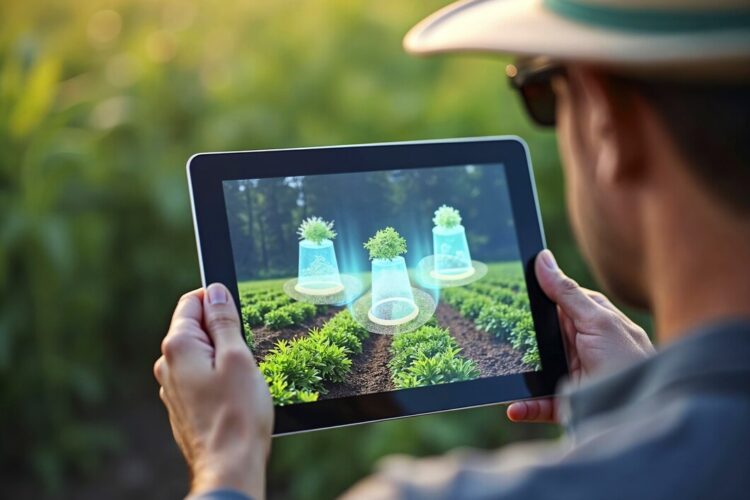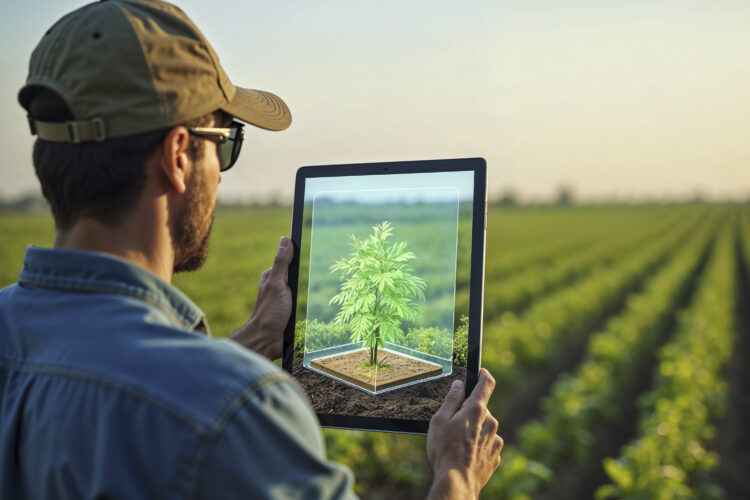The Future of Data Annotation in Smart Agriculture
The Future of Data Annotation in Smart Agriculture
The agriculture industry is undergoing a significant transformation, driven by the integration of advanced technologies like Artificial Intelligence (AI), the Internet of Things (IoT), and machine learning. At the core of these innovations lies data annotation, a crucial process that enables AI systems to interpret vast amounts of agricultural data accurately. As smart agriculture continues to evolve, the role of data annotation becomes increasingly important in optimizing crop production, resource management, and overall farm efficiency.
The Role of Data Annotation in Smart Agriculture
Data annotation involves labeling raw data to make it understandable for AI algorithms. In smart agriculture, this process is essential for training AI models that can monitor crop health, predict yields, detect pests, and automate farming activities.
For example, annotated drone images can help AI systems identify diseased plants or areas affected by drought. Similarly, annotated sensor data from soil and weather conditions allows AI models to make informed decisions about irrigation and fertilization, leading to better resource management.
Key Applications of Data Annotation in Agriculture
- Crop Monitoring and Disease Detection
Annotating aerial images captured by drones or satellites enables AI models to detect crop diseases, nutrient deficiencies, and pest infestations. Early detection helps farmers take timely action, reducing crop loss and improving yields. - Precision Agriculture
Data annotation supports precision farming by labeling data from soil sensors, weather stations, and farm machinery. This information allows AI systems to optimize planting schedules, irrigation patterns, and fertilizer application, enhancing productivity while conserving resources. - Automated Harvesting and Robotics
Annotated images and videos are crucial for training AI-powered robots to recognize ripe fruits and vegetables. These robots can perform tasks like picking, sorting, and packaging with high accuracy, reducing labor costs and increasing efficiency. - Weed and Pest Management
Data annotation helps AI systems differentiate between crops and weeds in field images. This enables the development of automated weeding robots that can target and remove weeds without harming the crops, minimizing the need for chemical herbicides. - Livestock Monitoring
In animal farming, annotated video footage and sensor data help AI models monitor livestock health, behavior, and feeding patterns. This information assists farmers in ensuring animal welfare and optimizing feed efficiency.
Emerging Trends Shaping the Future of Data Annotation in Agriculture
- AI and Machine Learning Advancements: As AI algorithms become more sophisticated, the demand for high-quality annotated data will continue to grow. Advanced models will require more complex and diverse annotations to improve their accuracy and reliability.
- Integration of IoT Devices: The increasing use of IoT devices in agriculture generates vast amounts of real-time data. Efficient annotation of this data is essential for developing AI-driven decision-making tools that enhance farm operations.
- Automated Annotation Tools: To keep up with the growing data demands, automated annotation tools are being developed. These tools leverage AI to assist human annotators, speeding up the annotation process while maintaining accuracy.
- Crowdsourcing and Collaborative Annotation: Involving multiple stakeholders, including farmers and agronomists, in the annotation process can enhance data quality. Crowdsourcing platforms allow experts to contribute their knowledge, leading to more accurate and context-rich annotations.
- Focus on Sustainability: With increasing emphasis on sustainable farming practices, data annotation will play a key role in developing AI systems that promote efficient resource use, reduce environmental impact, and support climate-smart agriculture.
Challenges in Agricultural Data Annotation
- Diverse Data Sources: Agriculture involves various data types, including images, sensor data, and weather reports, making annotation complex and time-consuming.
- Domain Expertise Requirement: Accurate annotation often requires input from agricultural experts who can identify subtle differences in crop health or soil conditions.
- Scalability Issues: The vast scale of agricultural data poses challenges in managing and annotating large datasets efficiently.
How Outline Media Solutions Can Help
At Outline Media Solutions, we understand the complexities of agricultural data annotation and offer tailored solutions to meet the unique needs of smart agriculture. Our services include:
- Expert-verified annotations for images, videos, and sensor data.
- Scalable annotation solutions to handle large agricultural datasets.
- Customized workflows to ensure accuracy and efficiency.
Conclusion
The future of data annotation in smart agriculture is promising, with advancements in AI, IoT, and machine learning driving new possibilities. Accurate and efficient data annotation will remain the foundation of AI-driven agricultural solutions, enabling farmers to optimize operations, increase yields, and adopt sustainable practices.
By partnering with a trusted annotation provider like Outline Media Solutions, agricultural businesses can leverage high-quality annotated data to stay ahead in the rapidly evolving world of smart farming. Together, we can shape the future of agriculture, making it more efficient, productive, and sustainable.



